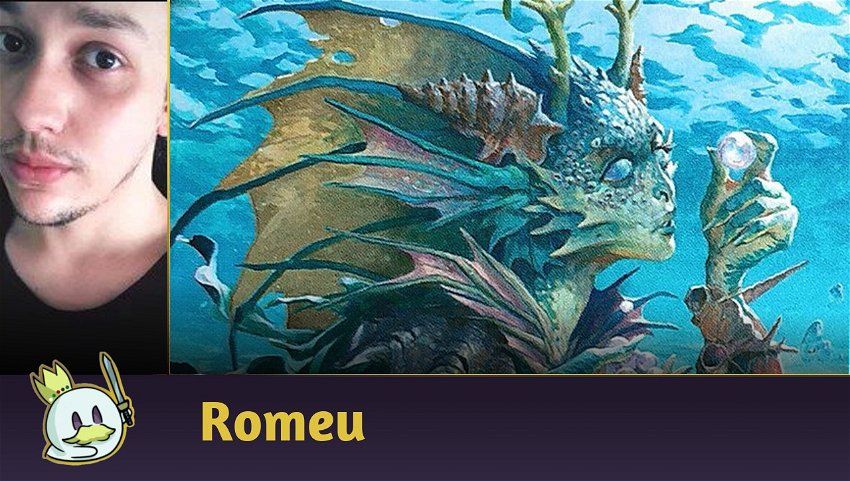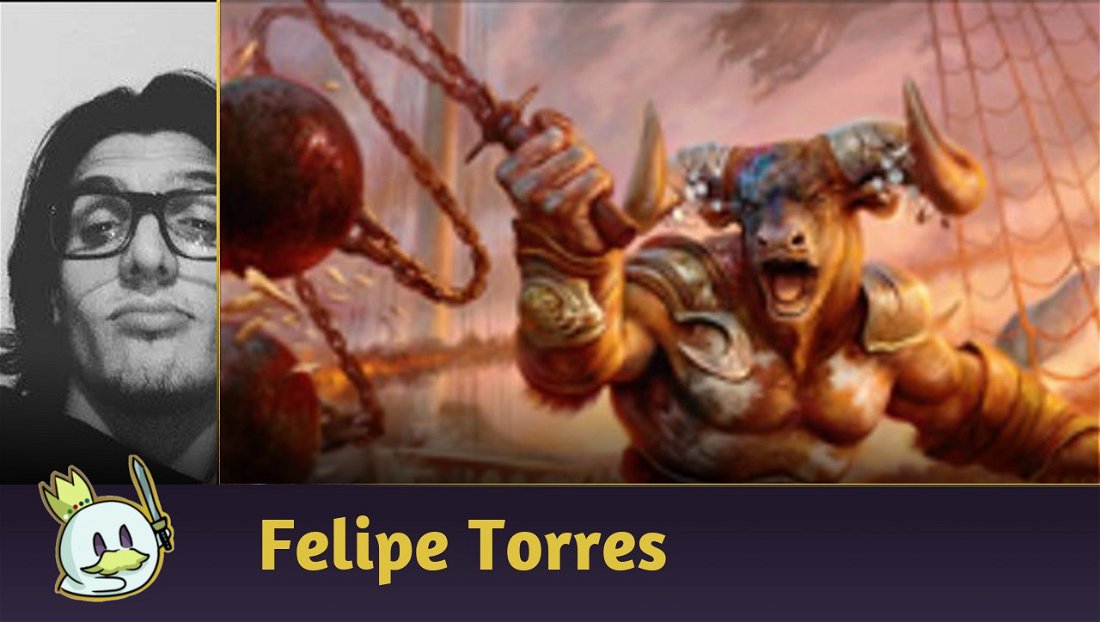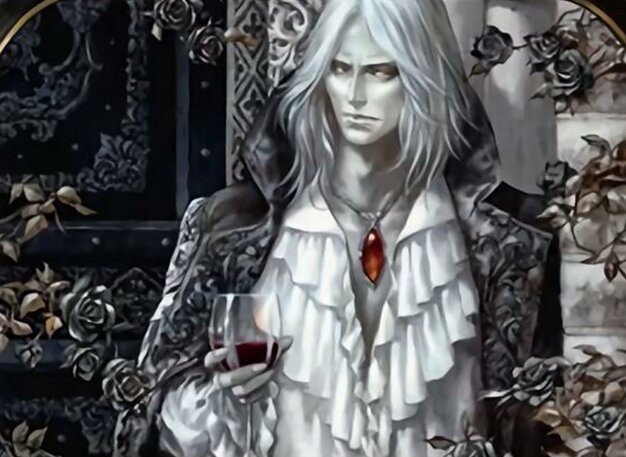Today, I will be featuring a different article than usual.
Rather than trying to analyze a particular deck, introduce the Metagame, or elaborate on the current state of the format, I'd like to try an imagination exercise with my readers.
Pioneer is a very extensive format in cards, mechanics and archetypes. However, it is also a format with fewer cards to keep in mind than Modern, for example. Therefore, it is possible to perform an analysis based on our memory of cards and mechanics that could be potentially dangerous in the future, as the format receives new additions each year.
Ad
In my particular list of cards that can be broken in the future, I average about fifteen or twenty that are on what I call the Watchlist, and they break into the following categories:
— Cards that have a problematic history in Competitive Magic.
— Cards that have powerful and unique effects not easily found in the rest of the format.
— Cards that create dangerous game patterns capable of breaking the Metagame with specific support.
— Cards that are present in several decks, even among the best decks of the format.
— Cards capable of patterning the deckbuilding of different archetypes.
— Cards that are naturally broken, but don't have the necessary support or enabler to do so.
— Cards that have a history of two-card combos in other formats (including Commander).
Today, I've chosen to bring eight cards that, I believe, have the potential to eventually break Pioneer in some way or become over-represented in the Metagame, consequently leading to its ban.
However, I strongly emphasize that this article is not intended to point out that any card should be banned from Pioneer at the present time.
The format is currently in a relatively well-diversified state, and despite all the talk we have about Izzet Phoenix or Winota decks, I don't think this is the specific time to be debating bans as it's the beginning of the Innistrad: Crimson Vow season, and we need to take a moment to assess the direct impact the new set will have on the format, as we've seen with the rise of archetypes like Humans recently, and I plan to comment a little more on the current state of Metagame within a few weeks.
So keep your pitchforks down, as I am not yet pointing out my particular judgment about Pioneer's health, as this matter demands a more profound analysis and much more grounded in facts and statistics than this exercise proposes.
That said, below are eight cards that are currently on my Pioneer Watchlist:
Treasure Cruise / Dig Through Time / Temporal Trespass

As expected, the Delve spells top my Watchlist because they match many of the standards by which I judge, as these are cards that are banned from a variety of competitive formats, have a problematic history, are played in one or more of the best decks in the format today, and have effects that are not found so efficiently in the rest of the format.
Lately, we've been talking a lot about Delve spells bans on account of Izzet Phoenix being the best deck of the format, while Dig Through Time archetypes such as Control decks aren't far behind in Pioneer's top rankings, essentially creating a scenario where basically all the blue archetypes need to be using some of these spells.
The inclusion of Consider didn't help much either, as these spells are banned from other formats because decks have a great facility to fill their graveyards due to fetchlands and low-cost spells, and an enormous facility in splash colors through the perfect manabase that Fetchlands + Shocklands provide.
Ad
In Pioneer, fetchlands are banned, which probably justifies the absence of archetypes that try to splash Treasure Cruise, in addition to the huge target graveyard decks currently have in the format, but Consider offers a way to streamline cast these spells while offering a powerful card selection and a low-cost spell to return Arclight Phoenix and/or transform Thing in the Ice, or untap your creatures with Jeskai Ascendancy, and the cantrip essentially performs the same function for Delve spells as a Fetchland would by filling one extra card on the graveyard along with it.
Also, while everyone was talking about banning these two spells, Izzet Phoenix lists began to adopt Temporal Trespass, along with Galvanic Iteration to partially reproduce, and for a much lower cost, the interaction Standard players do with Alrund's Epiphany, except for the part where our birds are 3/2 creatures with Haste.
That is, it doesn't matter if you ban one or two spells because some archetypes will always find a way to take advantage of another spell with the same mechanics that has a beneficial effect on their game plan.
Ultimately, all Pioneer players know that some bans would or will be obvious, and the surprise to me is that Treasure Cruise and Dig Through Time are still present, which in a way, reminds me of the time Gush was legal in Pauper: Everyone knew it was broken, but it added a unique and representative element to the format that for a long time defined Metagame and served as a Great attraction for players to want to experience the format in the ability to play with some of the most powerful spells in Magic: The Gathering.
Treasure Cruise and Dig Through Time serve that purpose for Pioneer, and as much as I would hate to see them depart the format because they bring a unique aspect to it, I know there will eventually be mechanics and cards that will make their cast much faster than acceptable.
Winota, Joiner of Forces

The other most talked about archetype in recent weeks is Naya Winota, for the speed with which Winota, Joiner of Forces creates a game state so big and so difficult to deal with that, many times, it wins the game on its own when you put three or more humans/werewolves onto the battlefield in the first attack streak.
But Winota isn't on my list specifically for her impressive results since Innistrad: Midnight Hunt, although the Werewolves package has added incredible consistency to the archetype, but rather because every Human who enters the format is a potential threat alongside Winota, Joiner of Forces, while every good mana dork the format receives is a potential enabler.
Eventually, there will be a huge abundance of highly impacting humans and highly efficient mana dorks that will cause Winota to become so powerful that it will be impossible to ignore its impact on the board, as it's already happening now, in particular thanks to Tovolar's Huntmaster.
Ad

Tovolar's Huntmaster is a perfect example of the type of Human that Winota, Joiner of Forces wants because it offers an extremely relevant body, plus two that will offer more triggers the next turn, while its effect with Nightbound offers a snowball so big that it will commonly win the game on its own.
Today, although the initial results have frightened the community, Winota decks seem to be being put in check by Control decks and more removal-oriented archetypes, and it doesn't demonstrate the impressive results we've seen in the Midnight Hunt season, which may have something to do with whether players are interested in testing Humans, or adapting the Metagame to deal with the archetype.
However, whenever new and better humans and enablers appear in the format, the more powerful the archetype will become, and eventually, there may be an occasion where Winota, Joiner of Forces becomes too strong to Pioneer.
Lurrus of the Dream-Den

The situation of Lurrus of the Dream-Den is quite different from that provided by Delve or Winota, and its impact on the format will likely only be felt fully over the years, as more and more low cost powerful cards enters into the format.
As for Lurrus, I think of situations similar to those that occur in Modern, where the card essentially standardized how several archetypes need to be constructed, as there is no reason for you to play higher cost cards in a game where the mana efficiency is one of the most objective means to victory (see what Izzet Phoenix essentially does), and still get the bonus of having an eighth card in your hand which is a true card advantage engine if staying in play is a great reason to lower the mana curve.
The card is now the protagonist of a significant portion of archetypes: Rakdos Arcanist, Orzhov Auras, Azorius Ensoul, Boros Burn, Boros Heroic, and already defines very well the way in which some archetypes are built, limiting the space of large Staples such as Bonecrusher Giant in Burn or Kalitas, Traitor of Ghet in Rakdos.
And as more efficient permanents are cast for a low cost, the more powerful Lurrus of the Dream-Den will become, and you'll be able to pattern more and more archetypes in the format around its abilities, especially if, at some point, we have effects on artifacts or other low-cost permanents that can be abused with the feline, as some lists do with Soul-Guide Lantern or Modern does with Mishra's Bauble.
Thassa’s Oracle

Some faithfully believe that Inverter of Truth paid the price for Thassa's Oracle's sins.
So, let's make it clear: Thassa's Oracle is a broken Magic card, it is the cheapest and most efficient way to win the game ever printed in history.
The card requires you to have a simple condition to close the game instantly in the form of no cards in your deck, and being an immediate impact effect via an ETB for two mana doesn't do much for it to be considered “healthy”.
Ad
In Pioneer, we saw how Thassa's Oracle was extensively played in Dimir Inverter, but also in Underworld Breach archetypes, which used Tome Scour to mill their own cards infinitely and then cast the creature.
And what prevents Thassa's Oracle from breaking Pioneer these days is merely that we don't have the means to do so, because once the format receives the next card combination capable of exiling the entire deck, the creature will again be considered a huge threat to the format and will likely star in yet another problematic archetype in the Metagame.
Speaking of exiling decks, Grolnok, the Omnivore is another card that points in a direction where Self-Mill triggered by some mechanic or ability can add even more consistency to casting Thassa's Oracle, though I believe that a three-card combo of this nature would not be enough, and the best option is to just combine the wincondition with an enabler.
Therefore, I believe that it will take no less than to print a mechanic or card that could be abused to quickly exile your own deck to take Thassa's Oracle straight to the format's banned list.
Indomitable Creativity

The penultimate card I'll mention in this article is one that has already done massive damage to Historic, Indomitable Creativity.
This spell is part of a sequence of cards, such as Transmogrify, that allow you to exchange one resource for another in your deck, putting it right on the battlefield, and the format has several effects of this genre, with the most famous probably being Lukka, Coppercoat Outcast.
So, why am I just naming Indomitable Creativity?
Because this card is the only one that can perform this effect with artifacts.

Artifacts are more difficult permanents to interact with in Pioneer than creatures, and there are numerous cards in the format that can be very effective in creating tokens for your game plan, such as the Standard staple, Unexpected Windfall and the recently released Secrets of the Key, as well as other spells that have recently come out that create Blood tokens, and older ones that create Clue tokens, among others.
What prevents Indomitable Creativity from being a powerful card in Pioneer is that, unlike what we see in Modern and Historic, there isn't a good enough payoff in the format:

Serra's Emissary essentially wins the game against any aggressive and non-interactive deck, and Archon of Cruelty is, as its name implies, a Cruel Ultimatum with a body.
In Pioneer, we have a complete absence of creatures with such devastating ETB effects, and not even cards like Ulamog, The Ceaseless Hunger or Emrakul, the Promised End serves this purpose, as their great advantage lies at the moment you cast these spells, and although a 13/13 Flying and a 10/10 Indestructible are great threats, they still open up windows of opportunity for opponents to deal with, and your combo doesn't have the expected impact.
Ad
However, the moment Wizards releases its next absurd creature (whether it has an immediate impact that changes the entire course of the game via an ETB, or has an absolutely broken recurring effect), Indomitable Creativity becomes one, if not the most efficient, ways of putting a giant creature onto the battlefield in the first few turns, while bypassing most interactions used against creatures via Treasure, Clue, or Blood tokens.
However, should this moment occur, I suppose it would be more practical for Wizards to ban the new creature than Indomitable Creativity, as it would still be possible to put it onto the battlefield via Transmogrify and Lukka, Coppercoat Outcast, but we know of the tendency for old cards to be banned, rather than new ones, when an archetype, especially a combo, ends up polarizing the Metagame
Fires of Invention

And at last, we have a card that is on this list because, fundamentally, it has an effect similar to other cards that have already been banned from the format: Cheating on mana costs.
Fires of Invention essentially allows players to use no mana to cast their spells, giving them the opportunity to better utilize their resources to activate abilities from their permanents or cards in their hand, creating a significant long-term advantage in during the game, where commonly Midrange and Control decks can capitalize on their effects.
Today, the card doesn't appear in any of the format's major Tiers, as Lukka Fires isn't as strong on Pioneer as it was on Standard, and decks like Enigmatic Fires have, so far, a fair and well-crafted game plan with the enchantment.
So, what does it take for Fires of Invention to break the format? Honestly, I'm not sure.
It could be that the card needs more powerful activated ability effects like The Scarab God, or a streak of two cards that creates a board position that's hard to get around and wins the game on its own, or just a few more effective proactive spell options to play with the enchantment.
And at the end of the day, we're still talking about a four mana enchantment whose "cheat" is tied to the number of lands you control, significantly hampering the ability to play explosive spells that win the game on their own, which perhaps continue to make it fair to the format.
However, Fires of Invention is a card that cheats in mana, and practically doubles or even triples the resources the player has when using it efficiently, and it wouldn't surprise me if, in some future where powerful cards with lower costs and/or impacting activated abilities arise, the enchantment becomes an issue for the format.
Conclusion
These are eight cards that are on my Pioneer Watchlist, as I believe that it takes only one or two additions to make them absolutely broken or predominant in the Metagame.
It's important to point out, again, that this doesn't mean that I believe these cards should be banned immediately, and it also opens a sign that we shouldn't look to ban old cards preemptively just because they might become broken in the future, especially in cases like of the exercise I tried to propose in this article.
Ad
At the moment, I believe Pioneer is in a relatively diverse state, even given the high representativeness of the Izzet Phoenix, an archetype that seems to be occupying a space close to what Delver Decks usually occupy in certain formats, although this statement is being done superficially, and demands a topic with deeper analysis and an article of our own to debate the health of the format, something I intend to do in a few weeks, after the Crimson Vow stabilizes in the Metagame.
Until then, let's try to enjoy the format with its uniqueness and differences, and with all the elements that make Pioneer a great and fun experience.
Thanks for reading!








— Kommentare0
Sei der erste der kommentiert